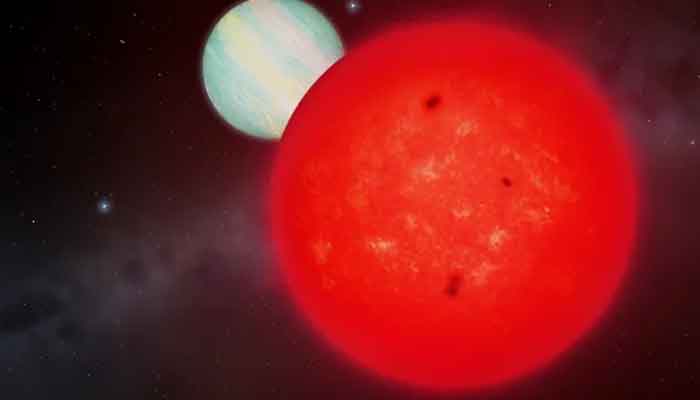A small red dwarf star, coexisting with a massive exoplanet, is challenging our fundamental understanding of how planets form, much like a family with tall children and short parents.
While giant planets are not inherently rare, as our solar system hosts four such worlds, the smallest stars, known as red dwarfs, are seldom found orbited by such massive planetary bodies. According to Space.com, there simply shouldn’t be enough material in the accretion disk around red dwarfs to facilitate the formation of such enormous worlds.
However, this theoretical constraint is defied by TOI-6894, a red dwarf star located 238 light-years from Earth. Despite possessing only 20% of the Sun’s mass, it is home to TOI-6894b, a colossal planet that is slightly larger than Saturn but has approximately half of its mass.
Statistical research indicates that only about 1.5% of red dwarfs are accompanied by gas giant planets, making TOI-6894 an exceptionally rare celestial object. Furthermore, it is 60% less massive than the next lowest-mass star known to host a gas giant, rendering it, by a significant margin, the least massive star with a large planet in orbit around it.
Locating this newly discovered planet within the data from NASA’s Transiting Exoplanet Survey Satellite (TESS) proved challenging precisely because such worlds orbiting red dwarfs are exceedingly rare. (The “TOI” in the system’s name stands for “TESS object of interest.”)
“I originally searched through TESS observations of more than 91,000 low-mass red dwarf stars looking for giant planets,” stated Edward Bryant of the University of Warwick, who spearheaded the discovery.
Yet, as Vincent Van Eylen, a team member from University College London’s Mullard Space Science Laboratory, articulated in the statement, “We don’t really understand how a star with so little mass can form such a massive planet.”



